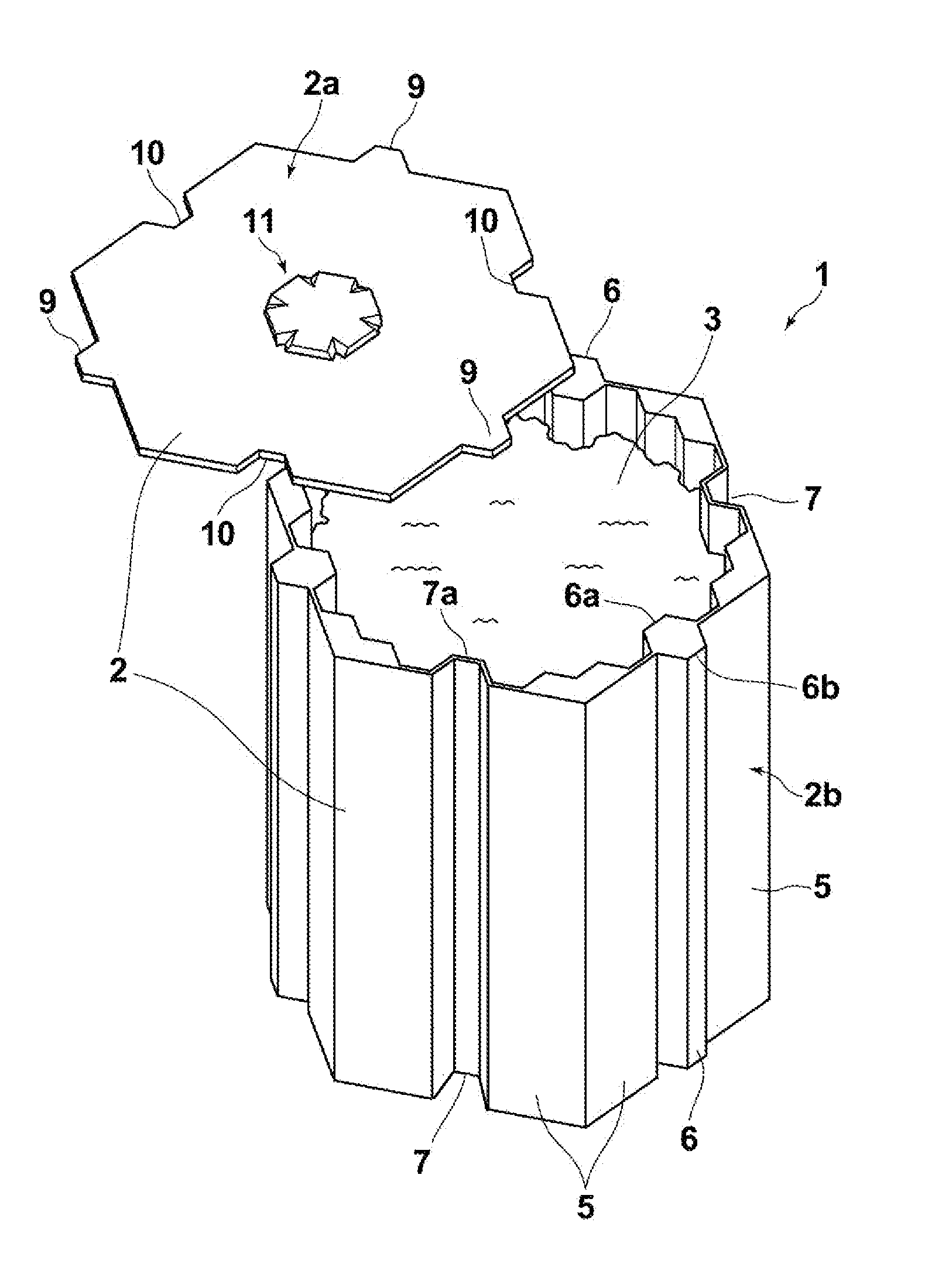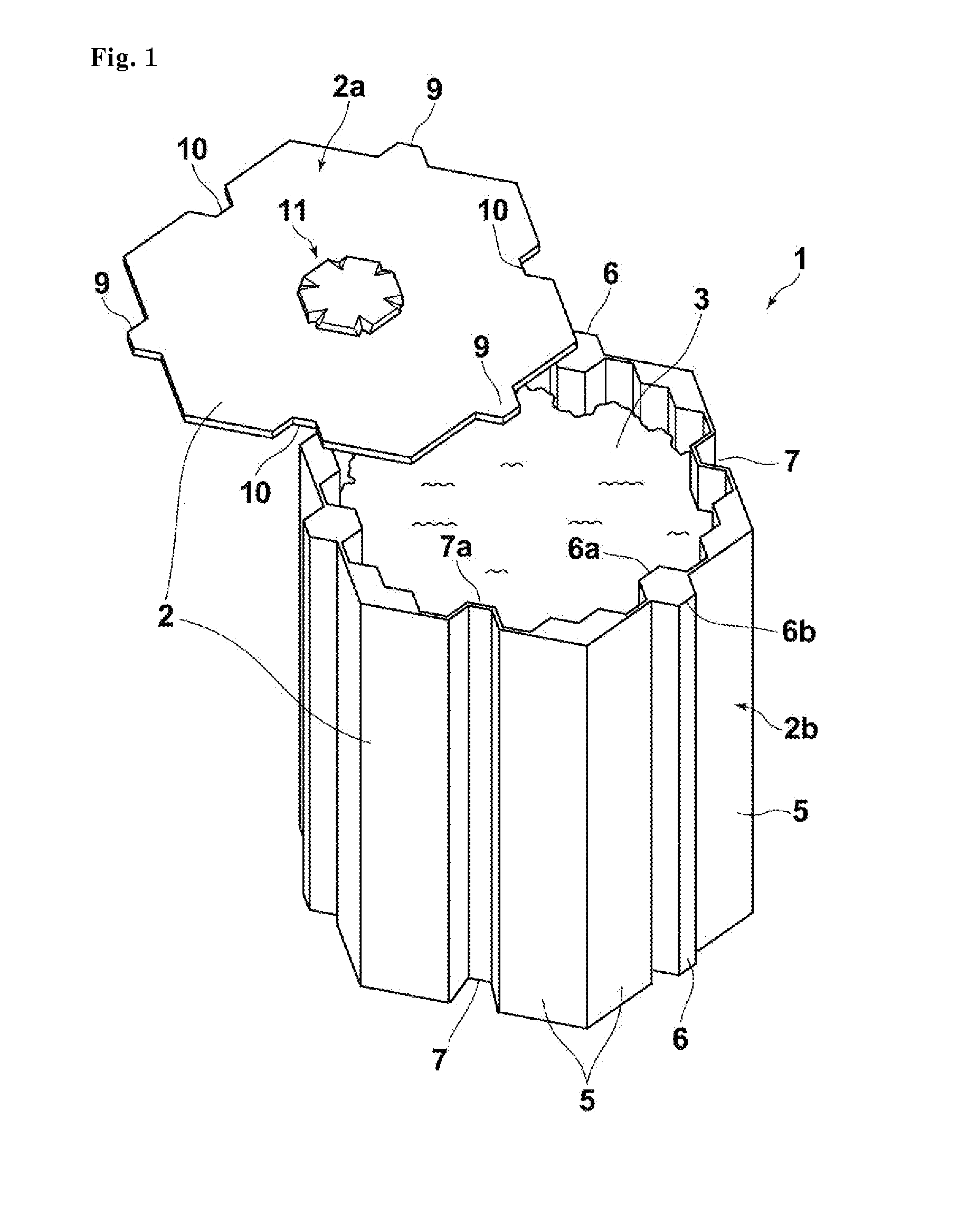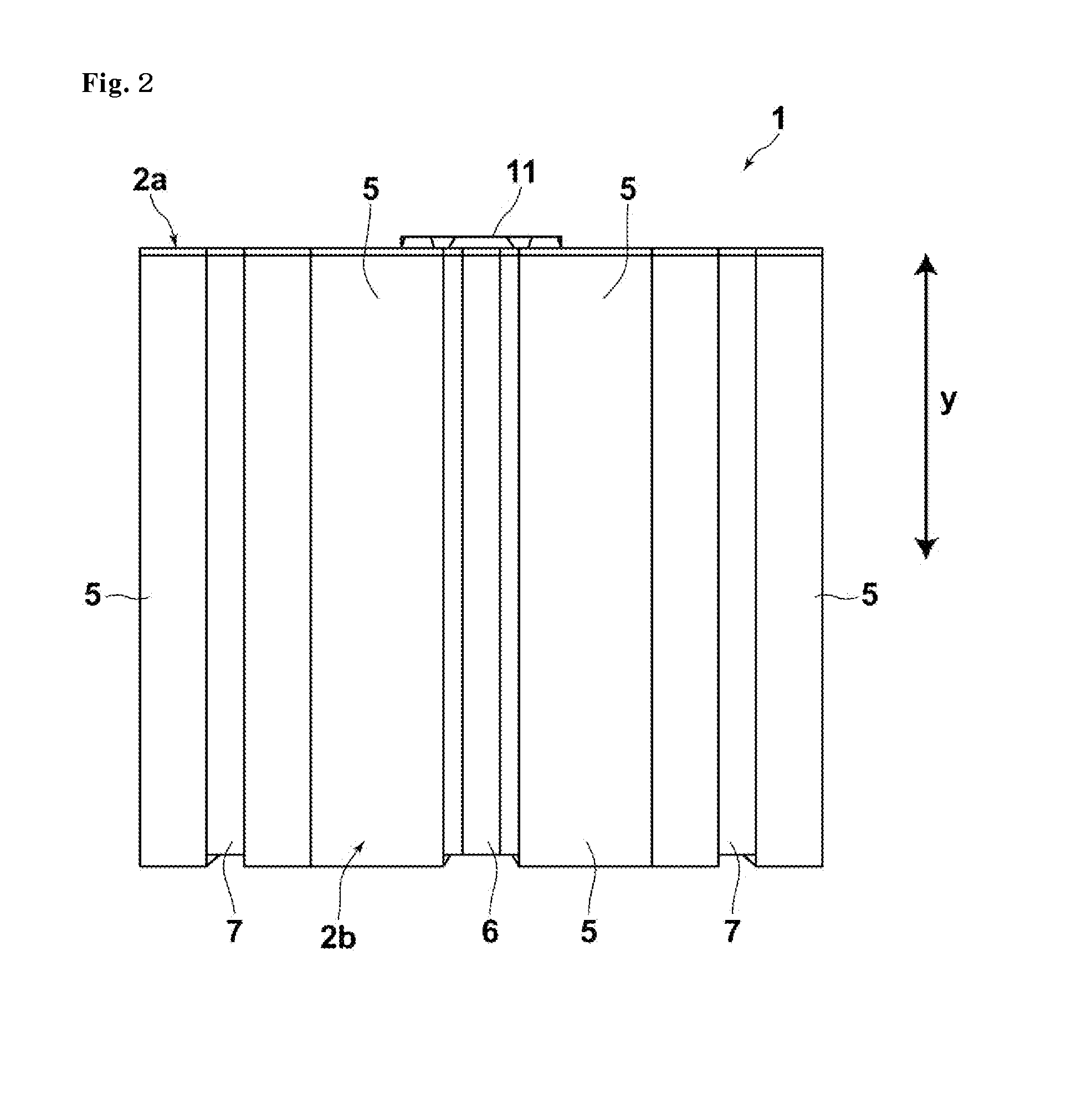Radioactive contaminant container
a technology of contaminated containers and containers, applied in the field of containers, can solve the problems of difficult safe stacking of containers thereon, adversely affecting the environment, and all radioactive contaminants cannot be immediately purified, so as to enhance the radiation shielding efficiency, and increase the thickness of the wall of adjacent places
- Summary
- Abstract
- Description
- Claims
- Application Information
AI Technical Summary
Benefits of technology
Problems solved by technology
Method used
Image
Examples
first embodiment
[0048]Hereinafter, an embodiment of the present invention will be described with reference to the accompanying drawings. FIG. 1 illustrates a perspective view of a radioactive contaminant container according to the first embodiment, and FIG. 2 illustrates a front view of the radioactive contaminant container 1. A radioactive contaminant container 1 includes walls 2 which define a containing space for containing radioactive contaminants 3 such as radioactively contaminated soil and radioactively contaminated ashes. The walls 2 shield at least a portion of radiation irradiated from the radioactive contaminants 3. The walls 2 of the radioactive contaminant container 1 have an outer shape of a substantially hexagonal cylinder.
[0049]The walls 2 include a detachable lid 2a disposed to be capable of introducing the radioactive contaminants 3 and a main body 2b. In the radioactive contaminant container 1 according to the first embodiment, as illustrated in FIG. 2, in a positional relationsh...
example 1
of Radiation Shielding Materials
[0083]SiO2 (manufactured by Iwai Chemicals Co., Ltd) of 40 mass %, SrCO3 (manufactured by Honjo Chemical Corporation) of 38.2 mass %, MgO (manufactured by Ube Material Industries, LTD.) of 20 mass %, Eu2O3 (manufactured by NeoMag Co., Ltd.) of 0.4 mass %, Dy2O3 (manufactured by NeoMag Co., Ltd.) of 0.4 mass % and H3BO3 (manufactured by Iwai Chemicals Co., Ltd) of 1 mass % were placed in a ball mill mixer, and were mixed for one hour. Then, the materials were placed in an electric furnace, and firing was performed under the conditions of air atmosphere, 1,300° C. and two hours. After the firing, the materials were naturally cooled to a room temperature, and were pulverized by using the ball mill mixer so that an average particle size thereof became 7 μm. In this manner, the radiation shielding materials in Example 1 were obtained.
[0084]A composition ratio of the radiation shielding materials in Example 1 was measured. The measured result was Si of 13.3...
example 2
of Radiation Shielding Materials
[0086]For the radiation shielding materials obtained in Example 1, sintering was further performed at 1,000° C. for approximately 30 minutes by using a plasma sintering machine (manufactured by SPS Syntax Inc., Model No.: SPS-1030). After the sintering, the radiation shielding materials were naturally cooled to a room temperature, and radiation shielding materials (pellet shape and thickness of 3 mm) in Example 2 were obtained.
Comparative Examples of Radiation Shielding Materials
[0087]A lead plate (thickness of 0.3 mm, commercially available) and an aluminum plate (thickness of 3 mm, commercially available) were respectively used in Comparative Example 1 and Comparative Example 2. X-ray Shielding Performance of Radiation Shielding Materials (X-ray Transmission Measurement)
[0088]The radiation shielding materials in Example 1 were further processed in a pellet shape (thickness of 3.95 mm) by using a press machine. According to a transmission method, an ...
PUM
 Login to View More
Login to View More Abstract
Description
Claims
Application Information
 Login to View More
Login to View More - R&D
- Intellectual Property
- Life Sciences
- Materials
- Tech Scout
- Unparalleled Data Quality
- Higher Quality Content
- 60% Fewer Hallucinations
Browse by: Latest US Patents, China's latest patents, Technical Efficacy Thesaurus, Application Domain, Technology Topic, Popular Technical Reports.
© 2025 PatSnap. All rights reserved.Legal|Privacy policy|Modern Slavery Act Transparency Statement|Sitemap|About US| Contact US: help@patsnap.com



